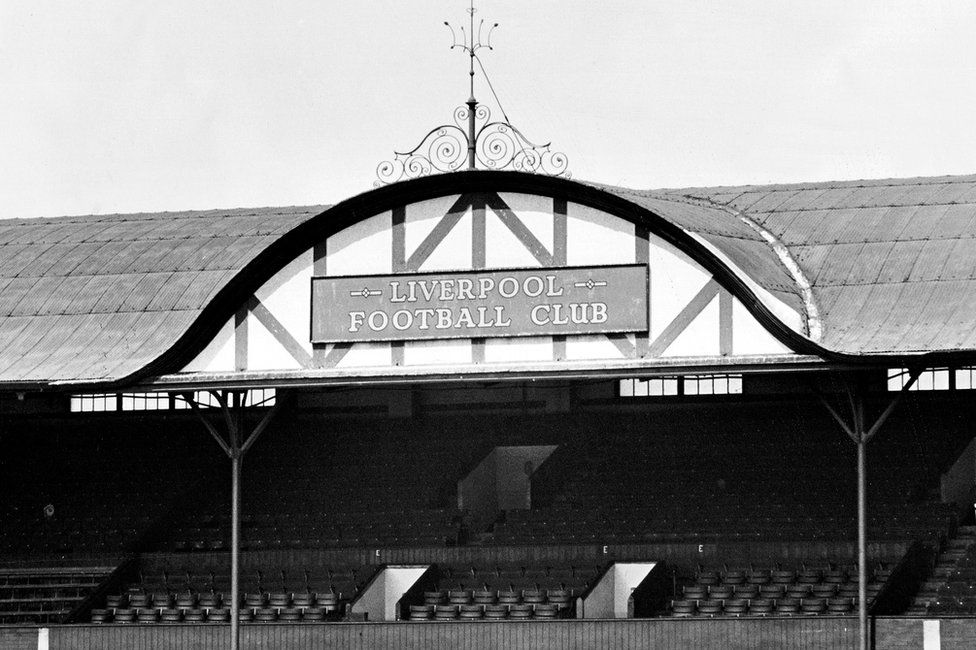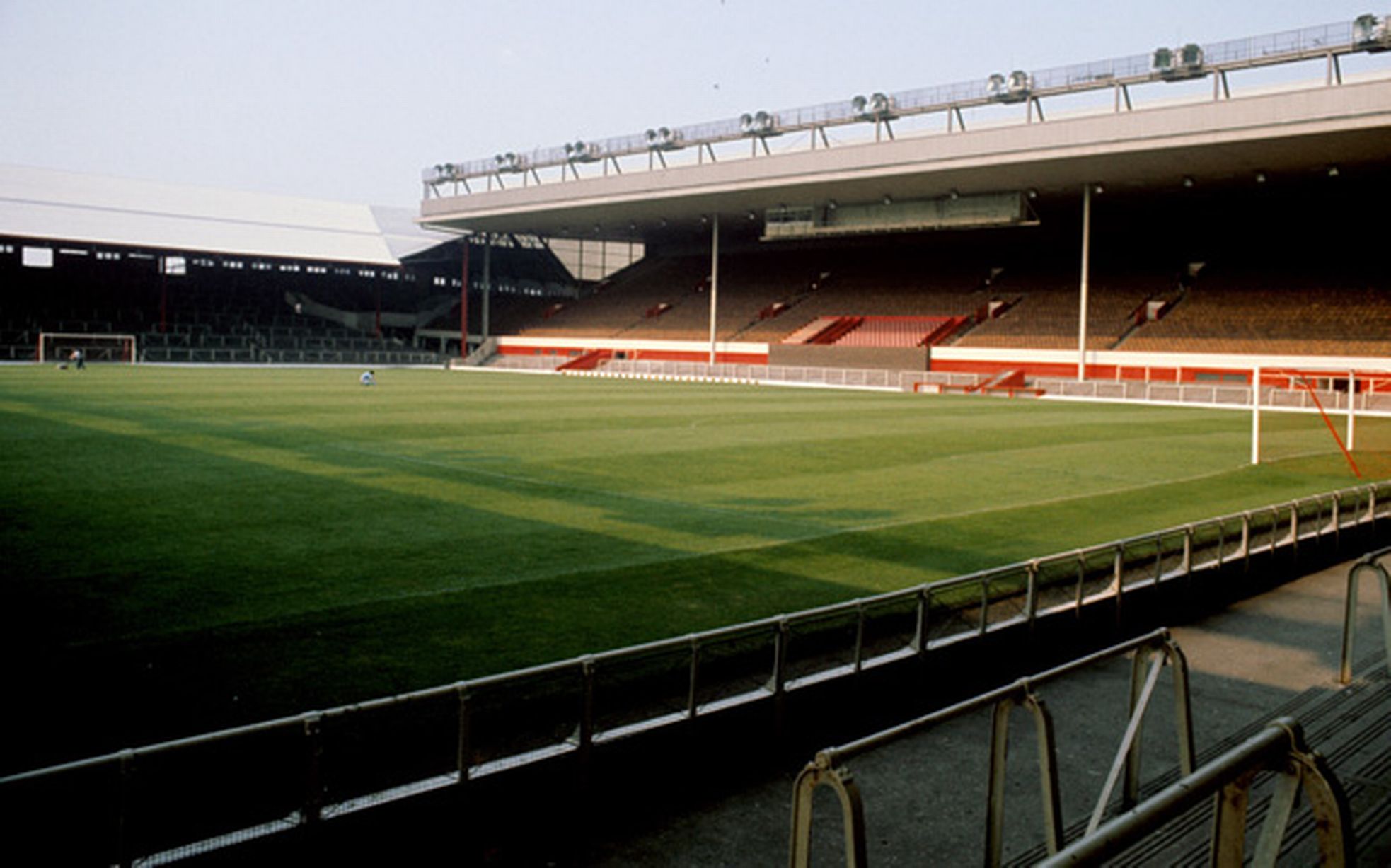Welcome to the The Edit, your matchday programme from The Terrace Apparel. In this latest article we dive into the archives and explore the history of Liverpool’s Anfield stadium. Despite being the iconic home to one of England’s most successful teams, things have always been quite as you would expect since the stadium was first built in 1884. We look at the controversial period where Everton were the tenants, Liverpool’s early success, and the hugely ambitious redevelopment project which gave us the infamous Kop.
Join us as we trace the history of one of world football’s most iconic stadiums.
Everton’s controversial time at Anfield
While Anfield is now synonymous with Liverpool Football Club, it was originally the home of their local rivals, Everton. When Anfield was first built back in 1884, Everton were on the look-out for a new ground having outgrown their previous homes at Stanley Park and Priory Road. John Houlding, a member of Everton’s board of directors, saw an opportunity to build a larger stadium on the site of a nearby field in Anfield, previously home to Everton Cricket Club. Houlding bought the field and leased the land to Everton Football Club for an annual rent of £100. The Blues moved in for the 1884/85 season, and won their first game 5-0 as they defeated Earlestown.
By 1888 Everton had become a professional football club and played their first Football League fixtured against Accrington Stanley at Anfield.

Source: Liverpool Echo
In 1891 a 50ft flagpole which had once been the top mast abord SS Great Eastern was purchased by Everton FC from a local shipyard in Rock Ferry. The flagpole was floated across the Mersey and hauled up to Anfield by a team of horses where it was positioned in the corner of the ground. The flagpole is still a striking feature at Anfield more than a century on.
Flying from the flagpole later that year was Anfield’s first league championship flag as Everton won the First Division at only their third attempt. But while the Blues enjoyed success on the pitch, tensions began to rise off it. A bitter dispute eventually broke out when Houlding attempted to increase the rent, leading Everton to move to a new venue on Goodison Road in 1892.
After Everton’s departure, Houlding decided to form his own club and so Liverpool Football Club was born.
Liverpool’s early years at Anfield
Houlding’s newly formed Liverpool’s played their first fixture at Anfield in a friendly against Rotherham Town in September 1892. John Miller had the honour of scoring Liverpool Football Club’s first goal in a 7-1 win. After one season in the Lancashire League, Liverpool were elected to the Second Division of the Football League. In 1893, just a year after moving to Anfield, Liverpool won the Second Division title and gained promotion to the top flight of English football, igniting their famous Merseyside rivalry.
The maiden clash between Liverpool and Everton came in October 1894 and was played at Goodison Park. Everton ran out 3-0 winners in front of a crowd estimated to be around 44,000. The first Anfield derby took place just over one month later, in November 1894, and saw the teams battle out a 2-2 draw.
By 1901 Anfield was home to the champions of England for the second time with Liverpool following Everton’s achievement from a decade earlier. Alex Raisbeck, regarded as one of the greatest players of his era, captained the Reds to their first of their 18 top-flight titles. On the back of this success, a new terrace was built on the Anfield Road side of the ground, a year after the club’s founding farther, John Houlding, had passed away.
The story behind the legendary Spion Kop.
Liverpool’s early years at Anfield were far from glamorous and the stadium was little more than a basic playing field with a single wooden stand. When Liverpool first moved to Anfield, the ground was in a state of disrepair, and the club had to work hard to make it suitable for their needs. The pitch was often muddy and uneven, and the facilities were basic at best. The players had to change in a nearby pub, and there were no floodlights or covered stands.
By 1906 the official capacity of Anfield was 25,000, but when an estimated 35,000 crammed into the ground for a derby day fixture that Easter, it was clear that demand was significantly outweighing the supply. Liverpool went on to clinch their second league championship that season, and once the campaign was over, engineer Archibald Leitch was tasked with overseeing an ambitious redevelopment.

Source: BBC
Once finished, Anfield was a completely enclosed, the pitch was raised, and the corners were rounded to enable the stands to be joined together. The new grandstand was the first in football to be built with reinforced concrete, with a red and white arched gable in the centre bearing the words ‘Liverpool Football Club’.
And, if you sat in the new grandstand and glanced to your right, you’d see ab imposing structure that would soon become part of footballing folklore.
The Spion Kop was a huge standing terrace capable of holding up to 20,000 spectators. Soon after the newly developed Anfield opened its gates, a record crowd of 40,000 watched the Merseyside derby.
The Spion Kop was famous for its noise and passion, with Anfield considered one of the most intimidating places to play for visiting teams. Sadly, it was demolished in 1994 as part of a wider renovation of Anfield. However, the memory lives on, and it remains an important part of Liverpool’s history and identity. Today, the “Kop Stand” stands in its place, which has a capacity of around 12,000 seats and continues to be a key part of the stadium’s atmosphere.

Source: The Liverpool Echo.
Shop our Liverpool collection
If you’re a Liverpool fan, you don’t want to miss out on our Liverpool collection at The Terrace Apparel. We have a range of high-quality t-shirts, sweatshirts, and beanies featuring intricate embroidered designs. Our Liverpool collection includes designs featuring some of the club’s most memorable moments and iconic players. Whether you’re a fan of the club’s rich history or their current success, we’ve got you covered.
All of our products are made from high-quality materials that are both comfortable and long-lasting. Our embroidered designs are carefully crafted using the latest techniques and highest quality materials to ensure that they remain durable and eye-catching, even after multiple washes.



